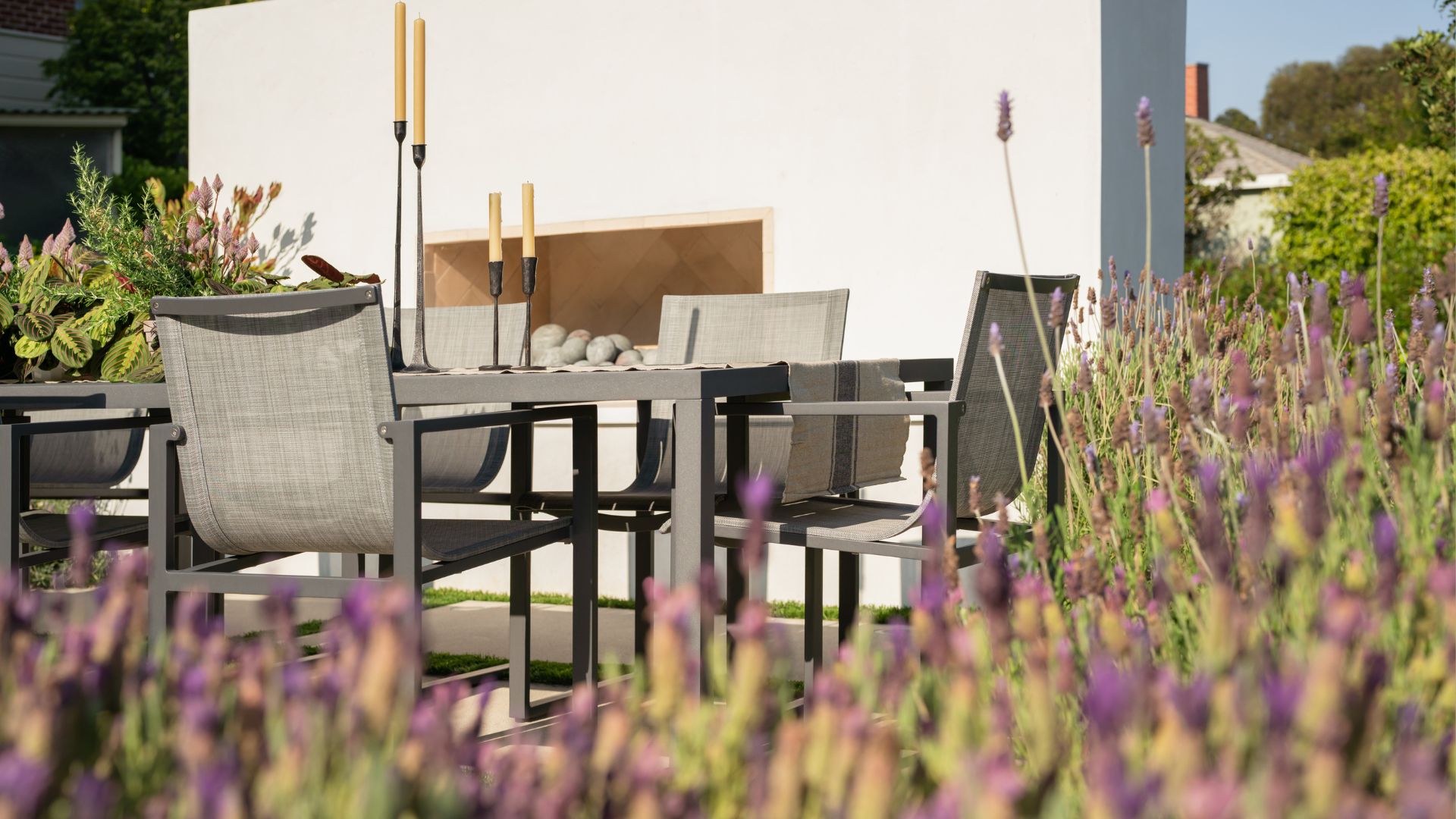
Already planning those long, summer days and nights on the patio, lounging and dining? Us, too.
And while looks are (nearly) everything to us, we want our other senses catered to, too. There's nothing quite so simple yet stunning that you can do to boost your outdoor living space than choose fragrant plants for your patio.
The flowers for a nice smelling backyard below have been chosen specifically with patios in mind. All will survive winter after winter to bloom again, and most will smell wonderful day and night across different seasons.
1. Russian sage
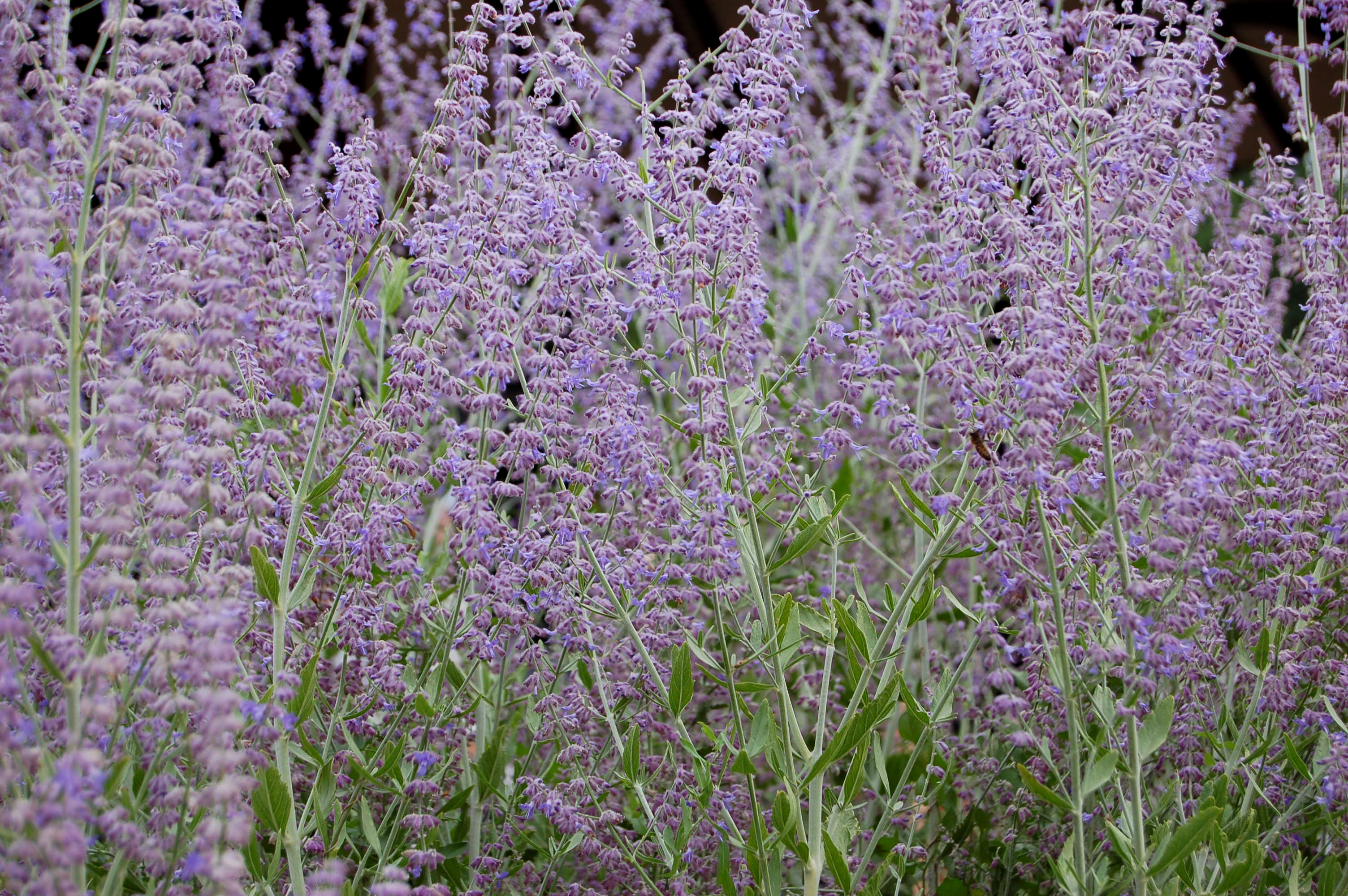
Russian Sage is a popular heat-tolerant perennial, with silver-gray foliage and lilac-hued flowers. As part of the sage family, it also emits a strong fragrance, especially when the leaves are crushed, adding a lovely aroma to the landscape.
"Russian Sage is a compact, hardy perennial with a mature height and spread of around 3 ft., making it a perfect plant for a patio," says Sydni D'Amico, plant expert, Fast-Growing Trees. "It dies back to the roots after the first frost and regrows when the weather warms in early spring.
"It is best to prune back Russian Sage after the foliage dies back to about 4-6 inches above the soil line and apply a thick layer of mulch to keep the roots insulated throughout winter."
2. Witch Hazel Jelena (Hamamelis x intermedia)
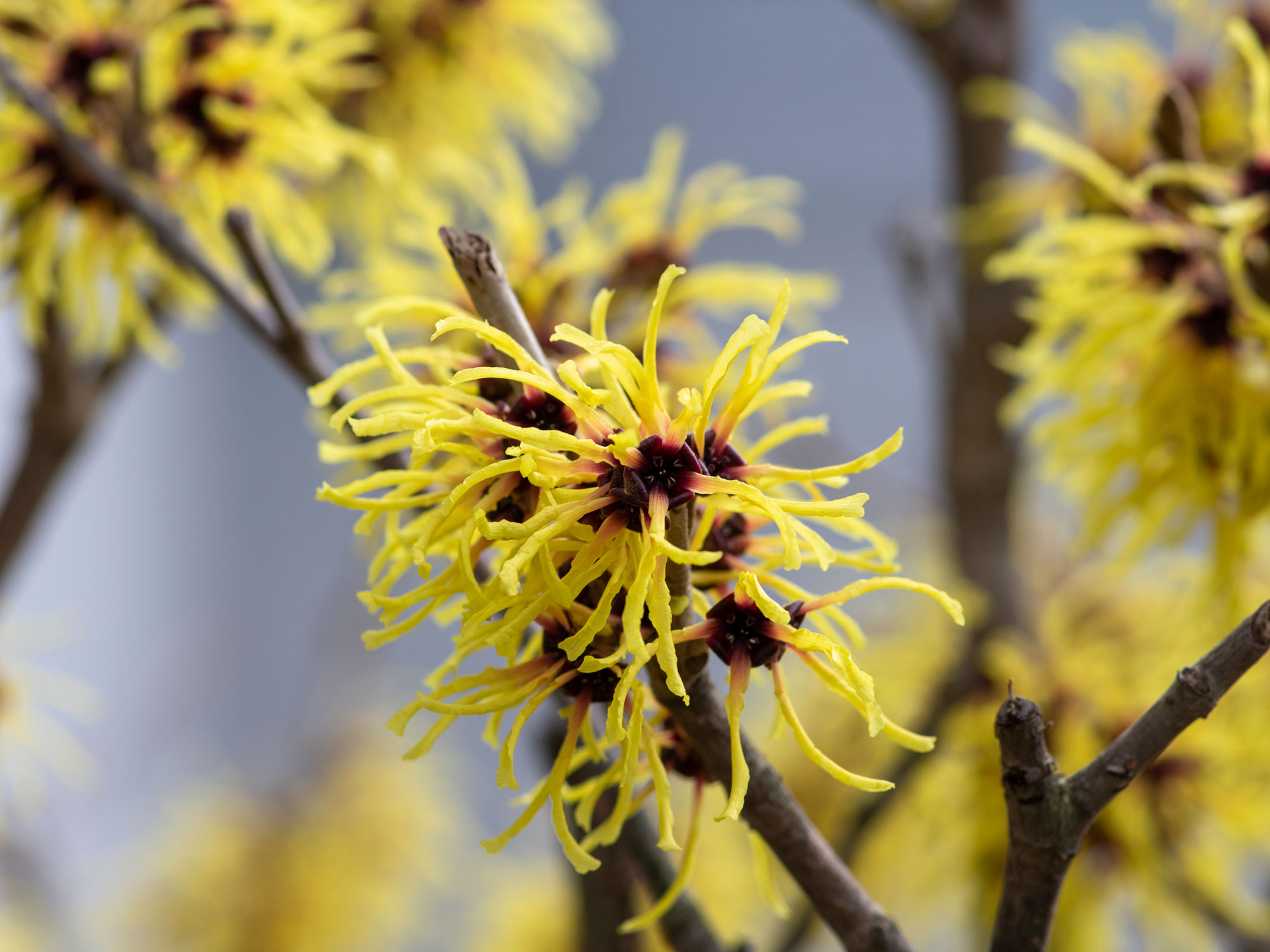
For a garden plant that is a prolific flowerer in the winter — Witch Hazel Jelena is a great choice. Although deciduous (it drops its leaves), this bloom is a great plant for a patio for almost year-round color and seasonal scent. It's low-maintenance, too, due to its tolerance of drought conditions and various soil types.
Syndey explains that this deciduous medium-sized shrub can grow up to 8-12 ft tall. "Although, when Jelena Witch Hazel is planted in containers, these plants tend to reach smaller mature heights, making them a great option for patio landscape designs."
Syndey continues: "It's easy to prune them as they mature to keep them at a certain height or shape too. The foliage of Jelena Witch Hazel shrubs transitions from green to an orange hue in the fall before it drops, and in the winter, emerges showy, copper-colored blooms with a strong, sweet scent.
"Though they tolerate dry conditions, I'd advise keeping the soil moist to help keep your plant thriving. Fertilizing should be done after the leaves drop in the fall to give the plant a boost for the upcoming blooming season. It is best to prune Jelena Witch Hazel shrubs after they have finished their bloom cycle in the spring," she adds.
3. Camellia × vernalis 'Yuletide'
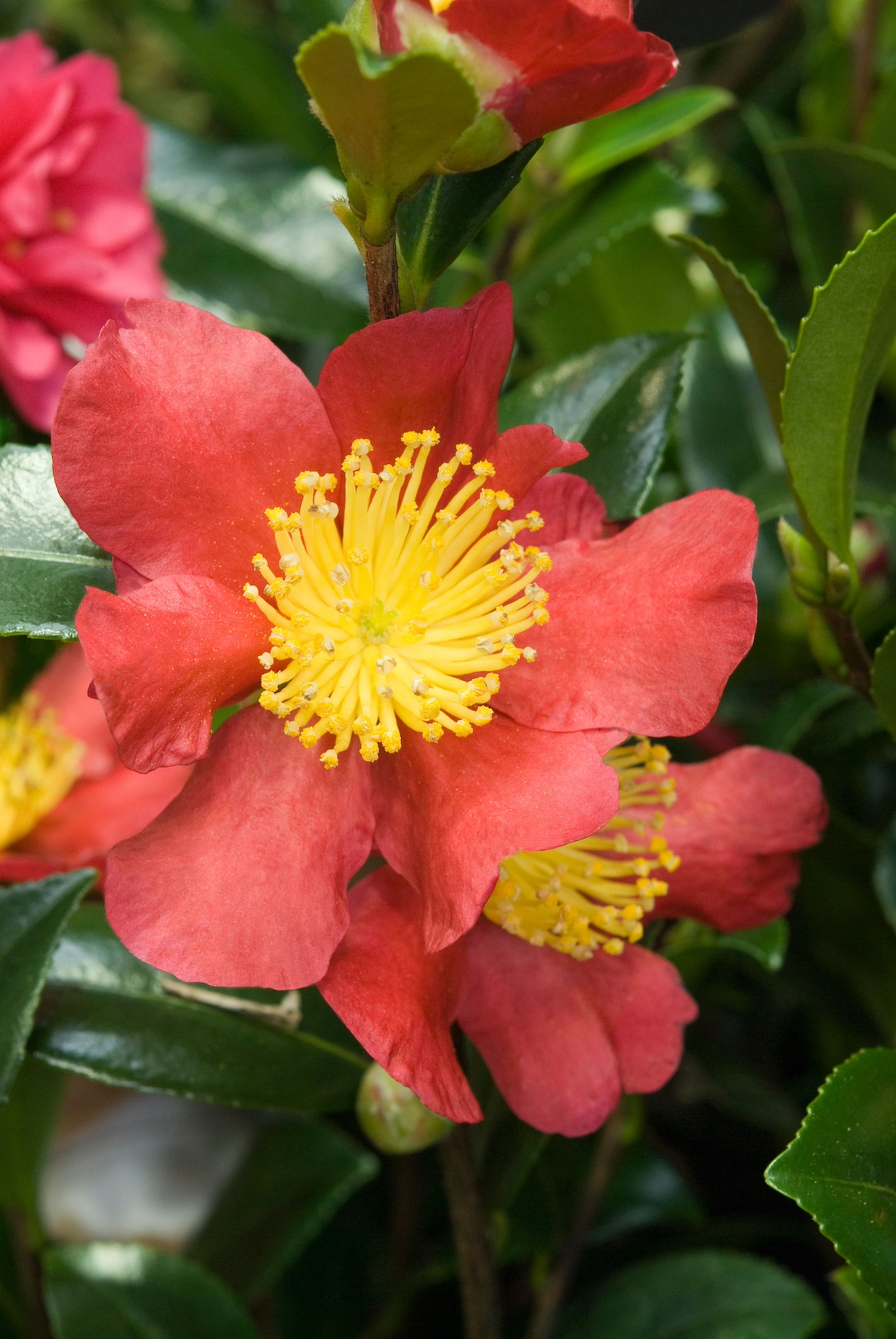
For a splash of winter color on a patio or in a container garden, Yuletide Camelia hits the spot. With its glossy evergreen leaves and big red flowers which arrive in the winter and early spring (depending on your hardiness zone), this plant will cheer up an outside space and make it feel lush when little else is in bloom.
"Yuletide Camelia can reach a mature height of around 8-10 ft but they tend to stay more compact when planted in containers," says Sydney. "They produce vibrant orange-red flowers as early as fall, with a bloom time that extends into winter. Even better, their blooms emit a light, refreshing fragrance reminiscent of tea roses or jasmine.
"These evergreen shrubs prefer organically rich, neutral to acidic soil. It is best to keep the soil consistently moist, especially as the plant is getting established. The best time to fertilize is the end of the bloom cycle when the flowers begin to fade to help support the following season’s growth. Pruning should also be done at the end of the bloom cycle to remove spent blooms and to manage the size/shape of the plant."
4. English Lavender (Lavandula angustifolia ‘Rosea’)
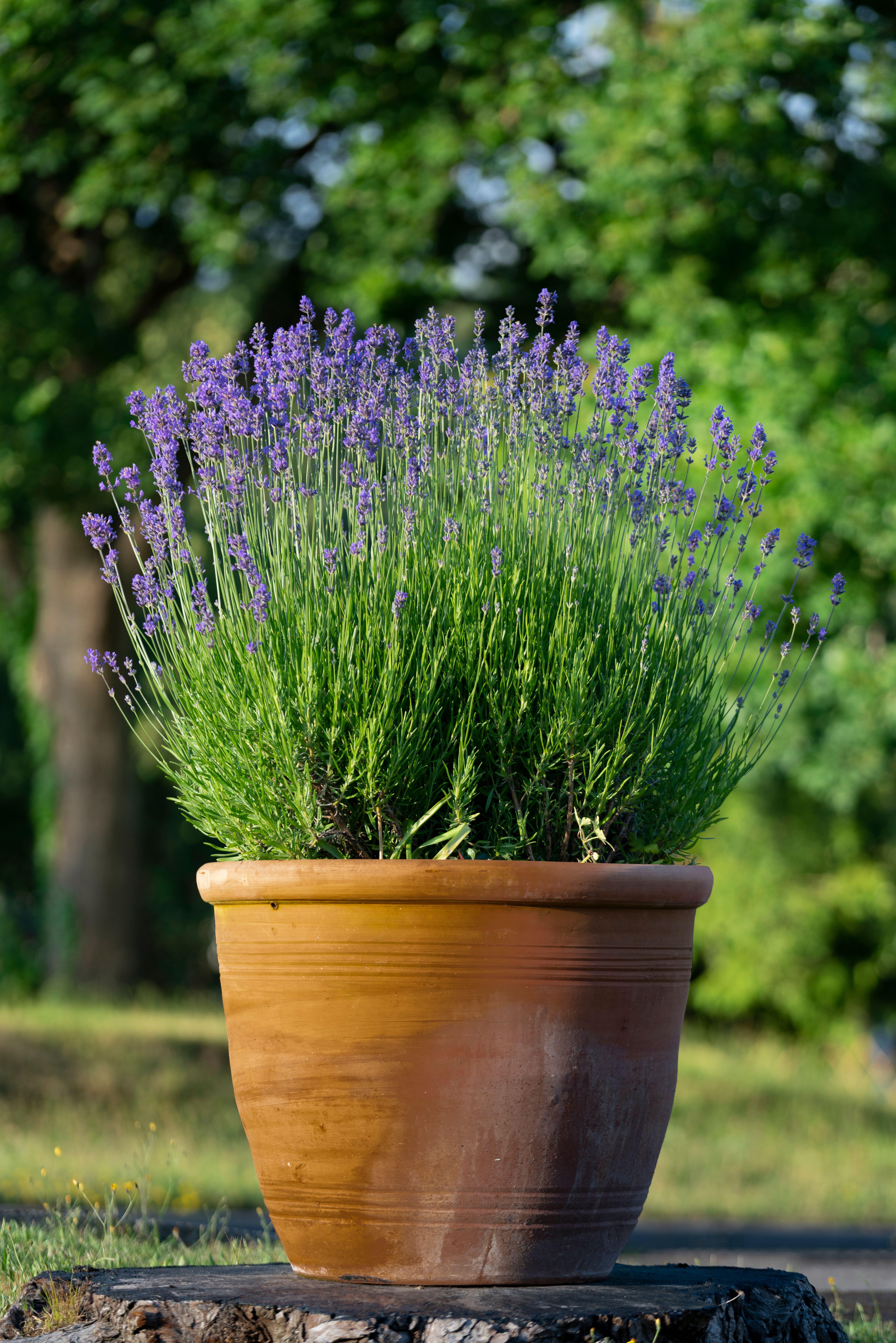
Loved for its stress-busting and sleep-inducing properties, Lavender is also one of the best shrubs for containers. It's easy to grow, has a profusion of purple or pink flowers and wafts its scent as you brush past. There are different types of lavender, but English Lavender is a favorite of Ali McEnhill, owner and propagator, The Old Dairy Nursery & Gardens.
"Lavandula angustifolia ‘Rosea’ is a particularly nice compact variety of true English Lavender with exceptionally fragrant silvery foliage and pale pink flowers," explains Ali. "Despite its common name, this is a Mediterranean native. As such, it needs excellent drainage and full sun.
"Do not attempt to grow it on overly fertile or moist soil. Light, sandy soil is preferred. I love growing lavender in containers where I can closely control drainage and moisture."
5. Mentha aquatica (water mint)
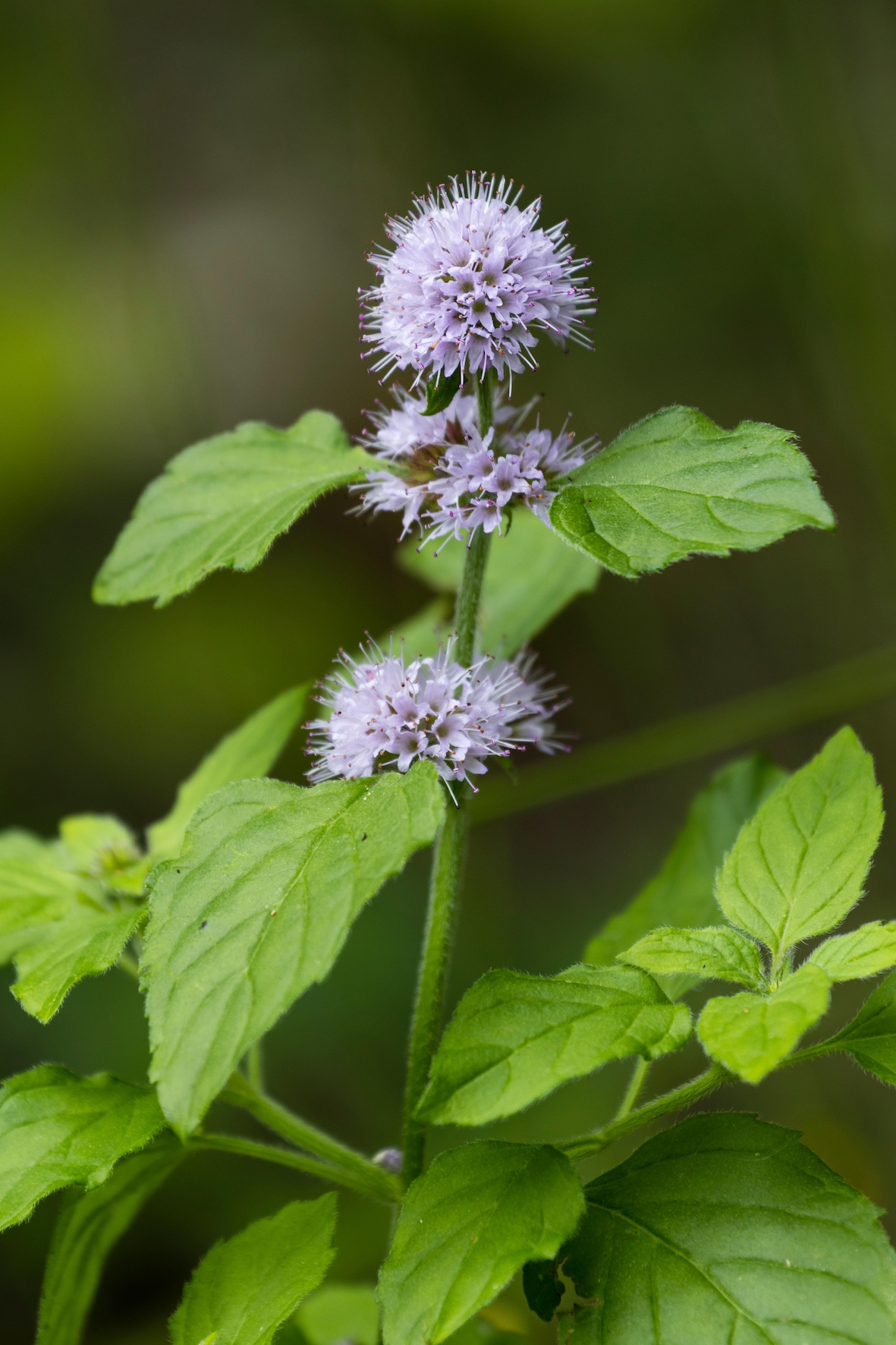
Whether you have a separate herb garden, or grow these edibles amongst other flowers and plants on your patio, they will scent your outside space beautifully. If you're not fond of sickly sweet fragrances, mint is a wonderful choice with its refreshing, uplifting aroma.
"All of the edible mints make wonderful fragrant container plants for patios–it’s probably the safest way to grow mint too," says Ali. "Water mint (Mentha aquatica) is perhaps the most aromatic plant I grow. Crushing a single leaf seems to be enough to scent our entire yard-and the intense scent draws in pollinators near and far.
"The rounded lilac flowers, which appear in profusion from July to October, are prettier (in my opinion) than any other mint. M. aquatica is very easy to grow in a small water garden or in a regular container that does not dry out," continues Ali. "This is a low maintenance herbaceous perennial that requires little care when grown in a pot. A word of warning: do not plant it directly in the ground or in a pond as it will quickly take over."
6. Matthiola incana ‘Pillow Talk’
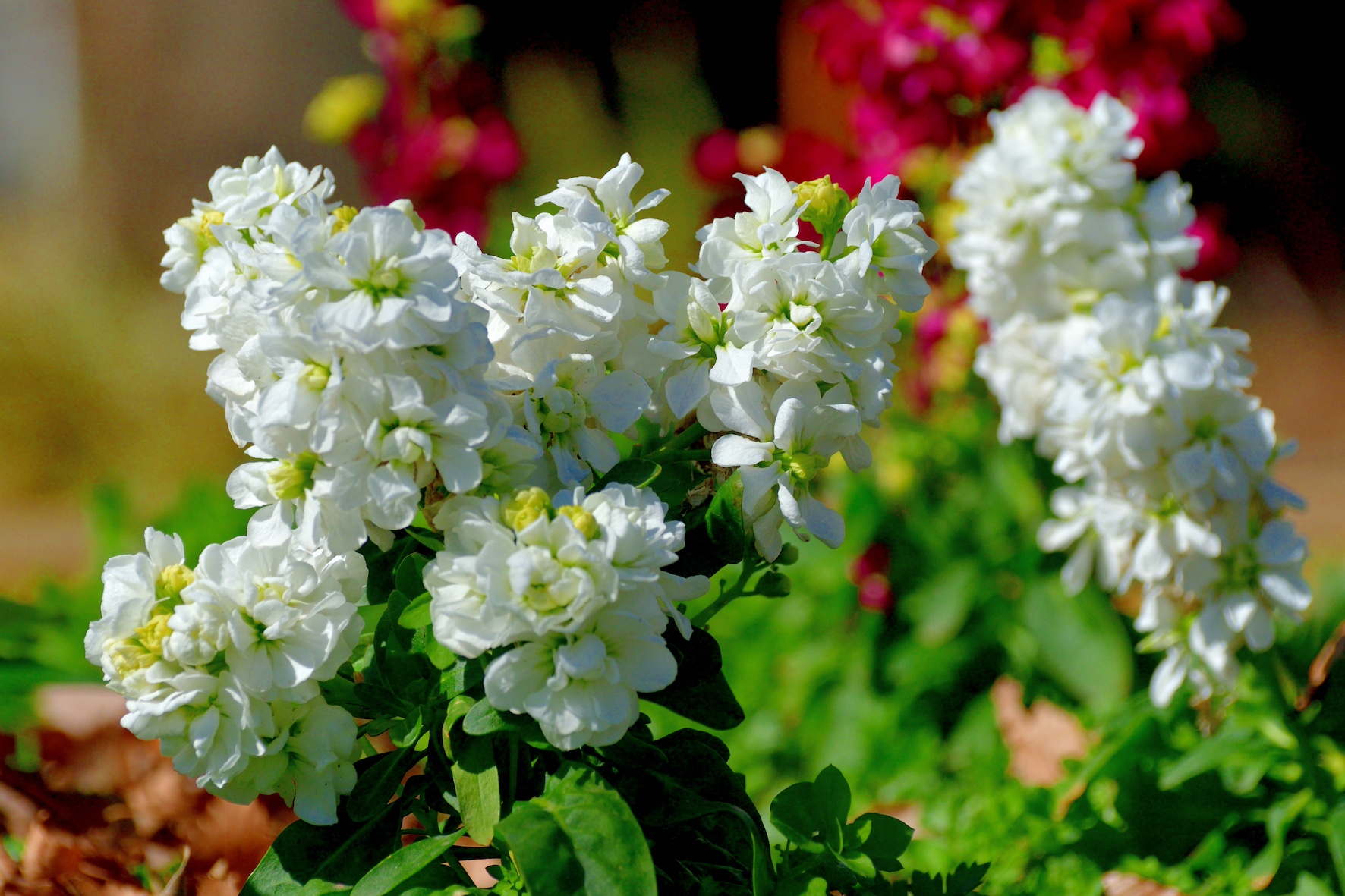
With spikes of sweet-scented flowers in various colors, from purple and mauve to pink and white, Stocks are popular plants for flower beds. Yet they are a wonderful choice for container gardening on patios too.
"Stocks are generally known as annual plants, but Matthiola incana ‘Pillow Talk’ is a perennial that will actually stick around for two or three years," says Ali. "It has a clove-like scent, which is heavenly–and even just a few cut stems in a jar can fill an entire room with fragrance."
The expert says he variety 'Pillow Talk' has "attractive, silver-green foliage and white flowers that darken to a pale pink with age. It's easy to grow in full sun and well-drained soil. It's also a perfect low-maintenance candidate for patio containers, where you can sit and enjoy the scent."
7. Honeysuckle

Honeysuckle is a fantastic fast-growing plant for privacy, but this fragrant climber is suitable for patios too. Planted in a container or a spot with a structure to climb around, it will add vertical interest, attract pollinators and scent the evening air.
Tabar Gifford, master gardener at American Meadows is a huge fan of Honeysuckle. "If you’ve got the room for a trellis or vertical structure on your patio, my favorite plant to add both fragrance and beauty is Honeysuckle (Lonicera periclymenum)," she says.
"While this plant can get a bad rap, because of invasive varieties, you can grow non-invasives like the ‘Scentsation’ instead. This vine can grow up to 8–10 feet tall and as wide as 20–30 feet, so it's perfect for trellises, arbors, or patio edges," explains Tabar. "Plant it in a sunny spot with moist, well-draining soil, and provide room for it to climb. Prune after flowering to manage growth and shape the vine. Creamy lemon-yellow flowers will bloom throughout summer, deepening in color as they age. By fall, the flowers give way to scarlet-red berries, for seasonal interest."
FAQs
Which type of plant emits the most fragrance?
Sydney D'.Amico, plant expert, Fast-Growing Trees tells us that herbs such as Lavender, Tuscan Rosemary and Lemon Grass are some examples of plants that emit the most fragrance.
"Herbs have glandular hairs (specialized hairs on the surface of plants) that produce essential oils, which give their foliage and stems a strong scent," explains Sydney.







